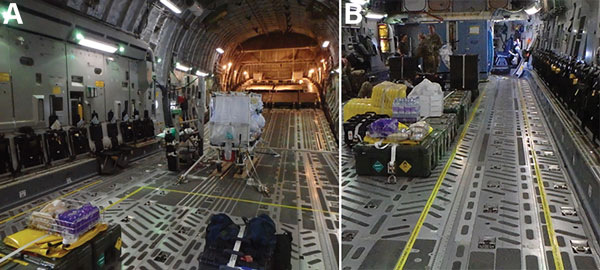Volume 25, Number 1—January 2019
Synopsis
Aeromedical Transfer of Patients with Viral Hemorrhagic Fever
Figure 4

Figure 4. Demarcation of clean and dirty zones during use of the Trexler Air Transportable Isolator patient transport system on a Boeing C-17 Globemaster transport aircraft. A) Yellow lines clearly demarcate clean and dirty zones as required for transporting both confirmed and exposed viral hemorrhagic fever case-patients. B) For exposed patients, the demarcation zone should extend to a corridor leading to isolated toileting and comfort facilities.
Page created: December 18, 2018
Page updated: December 18, 2018
Page reviewed: December 18, 2018
The conclusions, findings, and opinions expressed by authors contributing to this journal do not necessarily reflect the official position of the U.S. Department of Health and Human Services, the Public Health Service, the Centers for Disease Control and Prevention, or the authors' affiliated institutions. Use of trade names is for identification only and does not imply endorsement by any of the groups named above.